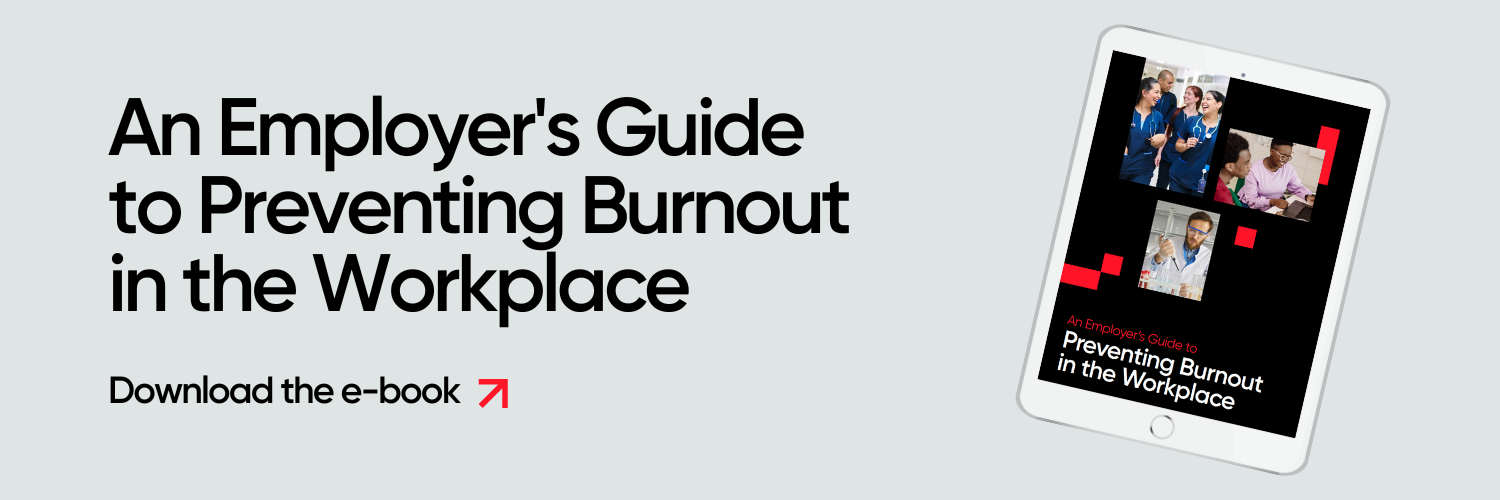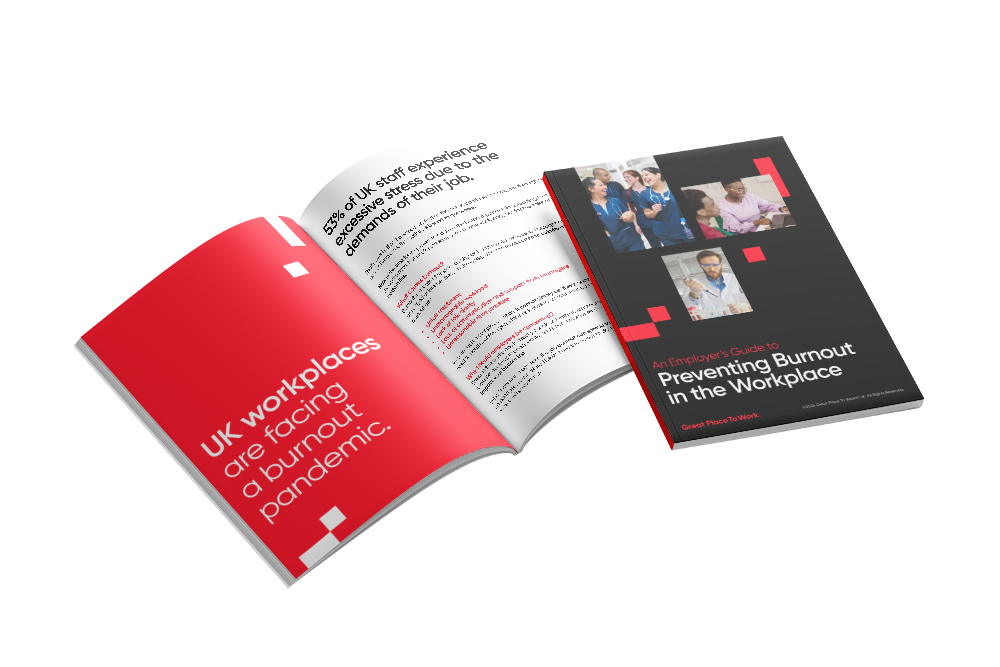Working from home has come a long way since the pandemic. What was once believed to be a phase is now the norm, with 29% of UK employees working partially from home and 10% working solely remotely.It can be easy for managers to adopt an ‘out of sight, out of mind’ attitude when employees work from home. But as remote work continues to be desirable, it’s imperative that leaders cultivate a workplace culture that supports employee wellbeing from afar.
If ignored? Organisations face the potentially catastrophic consequences of employee burnout.
What is employee burnout?
Employee burnout is a situational issue caused by excessive workplace stress. The condition, which is also referred to as job burnout, creeps in when employees feel they have little control over their environment.
Gallop reports that top workplace stressors linked to employee burnout include unreasonable time pressure, unmanageable workload, and lack of communication from managers.
What are the signs of employee burnout?
Burnout is inherently an employee wellbeing issue, and it must be addressed as such.
The symptoms of burnout can display differently depending on the individual, however, research from the University of Boston details three tell-tale signs of job burnout in your employees:
1. Lack of energy
Whilst not everyone exudes the same joy de vivre, those with burnout often demonstrate an obvious change in enthusiasm due to feeling emotionally exhausted. Energy drops can be identified in remote workers through changes in behaviour during meetings, involvement in discussions, and willingness to get involved with tasks.
2. Lack of connection
Employees experiencing burnout lose the joy they once had towards work, causing them to disassociate. This lack of connection often turns to cynicism as burnout progresses. If you notice a remote employee is skipping meetings, replying less, taking more days off, or has developed a negative attitude, it’s time to conduct a welfare check.
3. Lack of productivity
Completing even the simplest tasks can be a chore for employees suffering from burnout. Perhaps unsurprisingly, this leads to a drop in productivity. If you notice a considerable decrease in output from a staff member, you may wish to consider whether burnout could be the cause – especially if coupled with other symptoms.
The signs of burnout are clear if you’re looking for them. It’s up to you as a manager to pay attention to your employees, whether remote or in office, and act fast if you spot a cause for concern.
How does burnout impact a business?
As well as annihilating employee wellbeing, burnout can devastate your bottom line. It’s estimated that UK employers are losing around £45 million a year to stress-related absences. Combine this with funds lost to lack of productivity and you’ve got a recipe for disaster.
On the other hand, businesses who take an employee-first approach have been found to reap the financial rewards. Our data shows that Best Workplaces™ (companies officially recognised as leaders in providing an exceptional employee experience) outperform the market by 2% - 3%.
How can you stop burnout in remote workers?
The most effective way to stop burnout is to prevent it from occurring in the first place. Here are 4 ways you can support your WFH employees to help them maintain a healthy work-life balance:
1. Embrace flexible scheduling
You may have already noticed that some team members are more productive in the morning, while others get more done after lunch. This is especially true when working remotely. In fact, many people are most productive outside the standard 9-to-5 workday hours.
Allowing remote employees to align their work schedule to their most productive hours lets them effectively channel their energy whilst maintaining wellbeing. This is especially important for employees with dependants (e.g. parents or carers). Employees will appreciate you trusting them to manage their time and workload effectively. They’ll also enjoy the peace of mind of knowing that they can balance both their work and home demands. Happier employees = less chance of burnout.
Already practising flexible scheduling? Organisations across the UK are taking it one step further by trialling a 4.5 day work week - including Impression, a 2024 Best Workplace. Read how it went.
2. Suggest employees designate a workspace
When employees work remotely, it can sometimes be hard to disconnect “work” from “home”. This is true for even the most seasoned remote workers – especially in busy periods. Suggesting workers designate a dedicated workspace can do wonders for employee wellbeing. It could be a home office, or even a space such as the dining room table. This compartmentalisation will give them somewhere to walk away from when the day is done.
3. Encourage employees to set boundaries
Working from home has many perks for employees. One is that they could, in theory, work in their pyjamas. However, when people can roll out of bed and immediately turn on their computers, some of them will feel pressure to do so. The lines between "work" and "home" can quickly become blurred.
Encourage employees to set boundaries on when they start and end their days. By allowing workers to build a routine that suits them – including regular screen breaks – they are less likely to feel consumed by work. Make it clear you don’t expect them to “clock in” at the crack of dawn or stay online 24/7.
4. Help employees prioritise their health
The lack of commute involved with remote work is attractive to many, but WFH life can make it easy for employees to forget to move their bodies.
To help your employees stay at their best, encourage them to make time for their physical health. Simply taking a walk and enjoying fresh air can do wonders for employee wellbeing. You might also suggest they build time into their schedules for a fitness class or workout during their day. Helping employees prioritise their own health and wellness will make them feel better, stay healthier, and prevent the dreaded burnout from creeping in.
Want further tips on how to tackle the burnout pandemic spreading through UK workplaces?
Discover burnout prevention approaches from Certified companies in our free e-book: An Employer’s Guide to Preventing Burnout in the Workplace.








